Federico Pestilli’s plastic-smothered flowers are poignant metaphors
From vacuum-packed orchids to poppies cloaked in a garbage bag, the imagery in the Italian artist's ‘Nature Morte' explores nature's survival against humanity
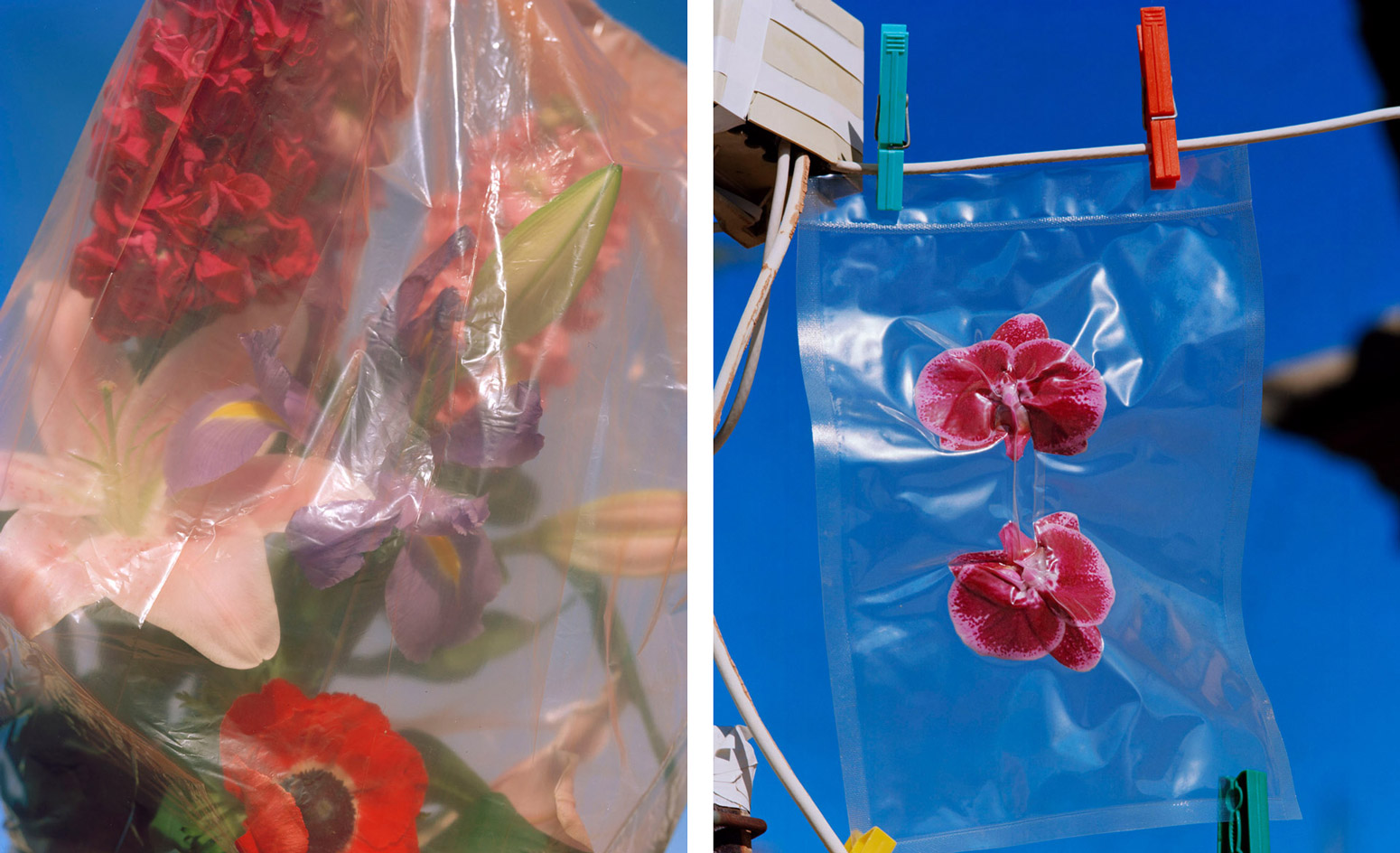
Federico Pestilli - Photography
Federico Pestilli conveys an important message of truth. His ‘Nature Morte’ photoseries sheds light on the global environmental crisis, threatening life on earth and jeopardising the inherent beauty of the natural kingdom.
Serving as a metaphor for humanity’s fragile connection to nature, this series features a collection of powerful images of flowers wrapped in plastic: a daisy covered by an empty bottle, a bouquet of roses clustered in a plastic sleeve, and a tulip stuck in a condom. These seem to struggle for survival against a backdrop of saturated blue skies.
‘Nature Morte’ is the ultimate still life: while utterly vivid at first glance, each work is an imperative reminder of the incessant destruction of our environment. We spoke to the artist about the origins of this compelling series.
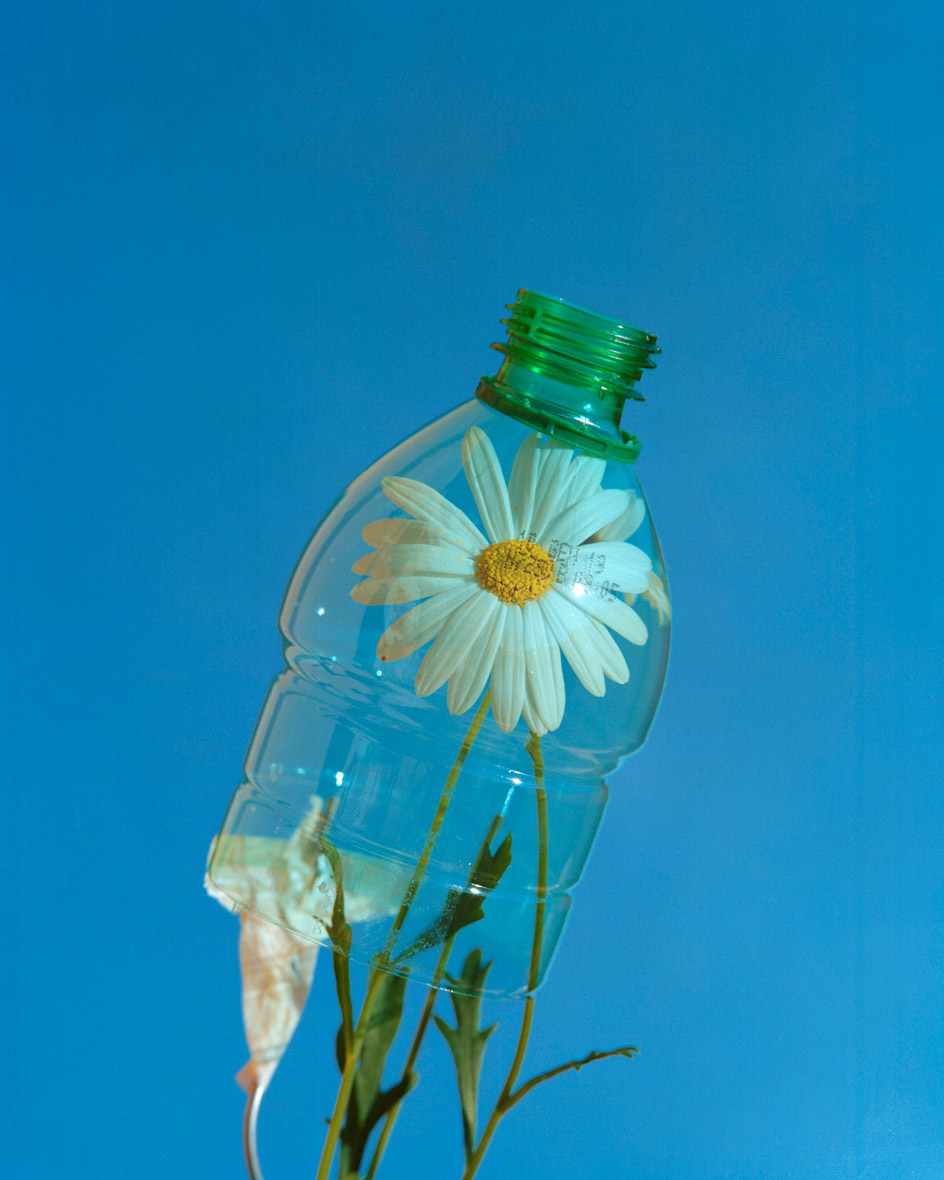
Daisy in Bottle, from the series 'Nature Morte' by Federico Pestilli
Wallpaper*: What is the concept behind your series, ‘Nature Morte’?
Federico Pestilli: ‘Nature morte’ was adopted by the French in the 18th century. It was their translation for what the Flemish painters called ‘stilleven’, a term subsequently adopted in English as ‘still-life’. The literal translation of the French expression is ‘dead nature’ and felt the most apt for my series.
I composed the images over a year ago. The feelings from which they sprung seem to be even more relevant now. Humanity’s encroachment upon the environment, the abuse of natural resources and the pollution of natural spaces, are all subjects I have had at heart since I was a child. Perhaps we are more aware of issues such as global warming but so little has been done to correct them. We keep sliding towards environmental instability and mass extinction. Concomitantly, with the demise of nature comes our interior and ethical breakdown.
This is the conundrum described by the series. The flowers symbolically take on various roles: they can represent us, struggling to survive, just as nature is trying to survive humanity. The aspect of a struggle, both physical and mental, is the original concept which brought the series to light.
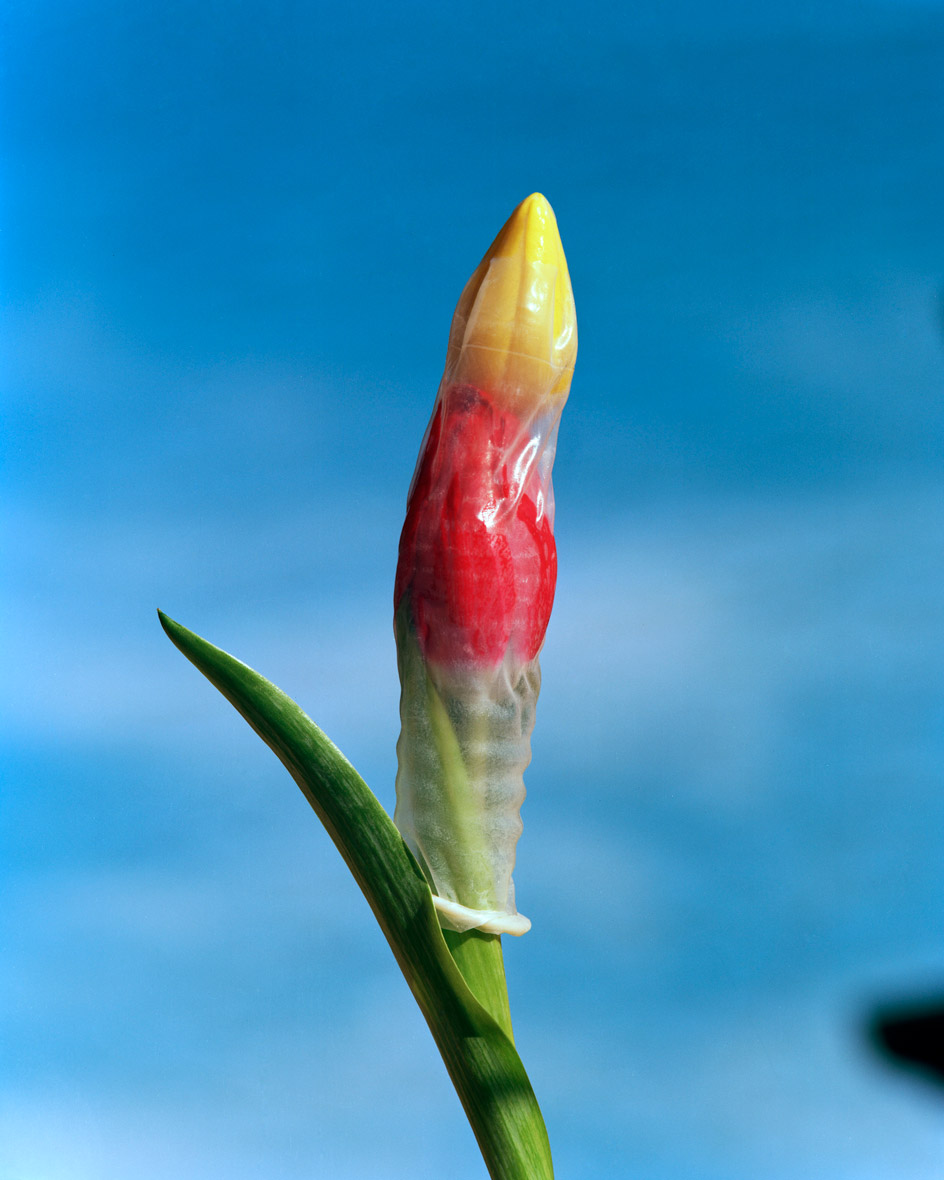
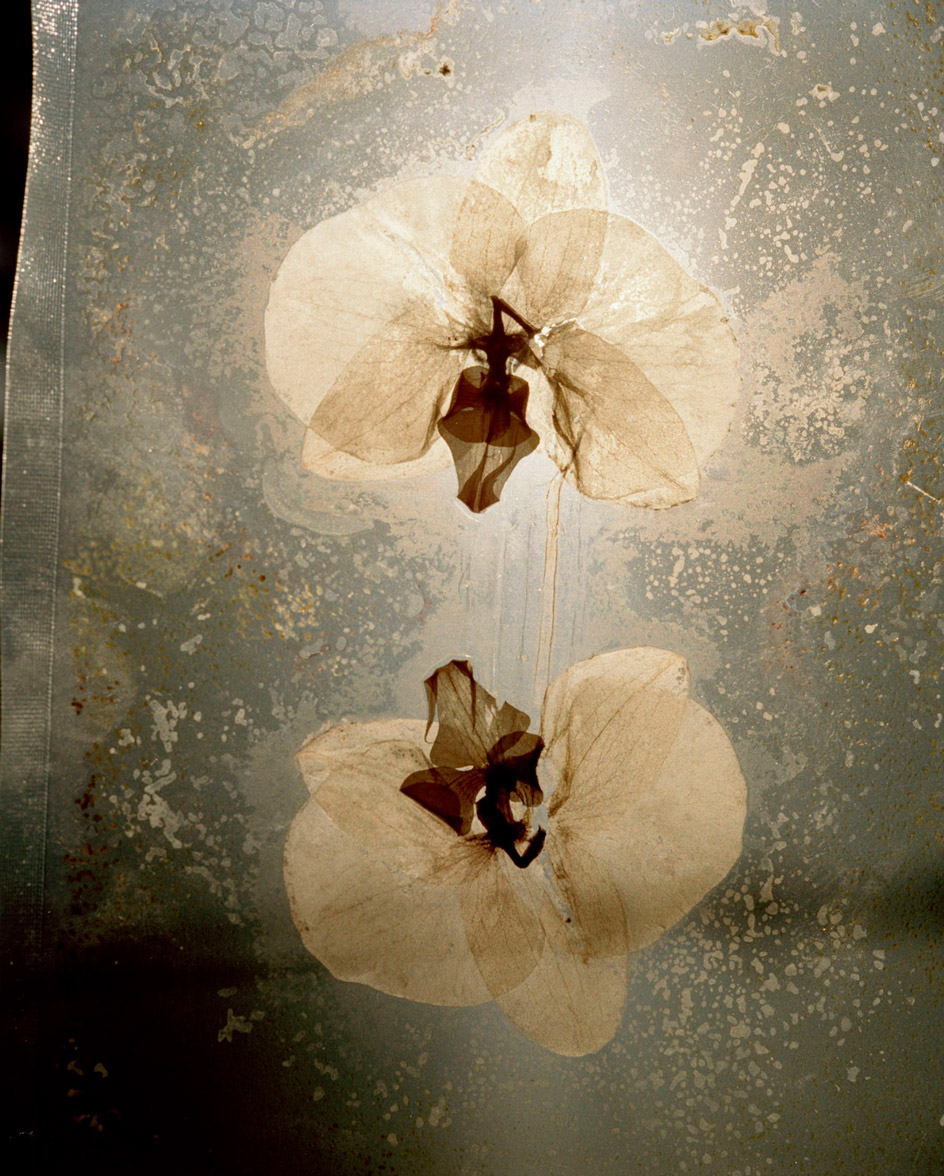
Above: Tulips in Condom. Below: Orchids Vacuum Packed Six Months II
W*: How might a plastic shroud be seen as a metaphor for the fragility of human existence?
FP: Shrouds throughout history have had religious and moral connotations. One may think of the Shroud of Turin or the ‘shrouds’, i.e. garments, worn by women in antiquity and in the Middle-East, including, in a Christian context, the iconography of the Virgin Mary. Plastic, however, is a new technology that perfectly encapsulates the contradictions of humanity’s ingenuity. In our desire to control nature, we invented a tool to separate us from it. Plastic’s primary function is separation. Its property to isolate, contain, protect inner from outer matter provides solutions to many of our needs. Its durability or resistance to degradability, on the other hand, represents a threat to every living organism. Shrouds are usually not transparent, they are used to protect whoever wears them both from external elements and from the judging eye of society. The transparency of plastic highlights how the problems we are facing are a contemporary issue.
W*: Which flowers did you select for this and why?
FP: Flowers are timeless and one may suppose that a sunflower looks today just as it did to the ancient Egyptians or prehistoric men. Nature, and still-lifes, by extension, are a point of reference. In the context of painting one may think of representations from Caravaggio’s basket of fruit and Van Gogh’s sunflowers, in photography Edward Weston’s peppers and Robert Mapplethorpe’s flowers in vases. The flowers are subjects many have depicted in their own peculiar manner and reflect the sensibility of each artist. The choice of flower types was purely aesthetic and had no preconceived meaning. Some shapes and colours better suited the plastic I used, and in particular, the rose, with its many detachable petals was ideal to illustrate a degradation through time. I am also quite fond of the image of tulips in a condom, representing the desire to control nature and its contradictions. I chose the subject of flowers to speak of deep-rooted issues through metaphors which could be appreciated by all.
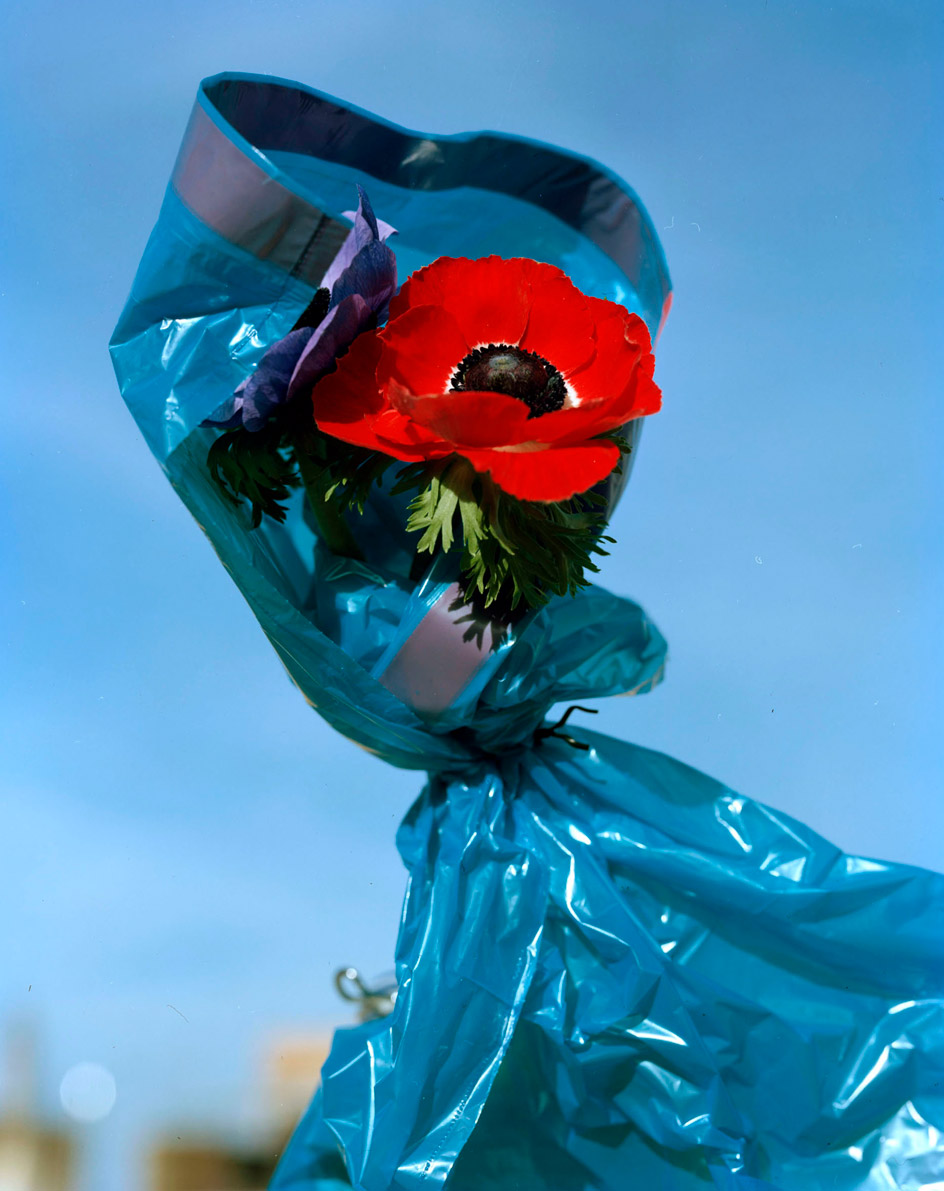
Poppy in blue garbage bag
W*: Can you talk us through your photographic approach to this?
FP: The key elements I wished to include in this series were sunlight and the sky. The photographs were all captured using only sunlight and were shot in medium and large format (4x5) colour negative film. As the Spanish painter, Joaquin Sorolla is quoted as saying ‘more light, more truth’ (más luz, más verdad). It was important for me to take my concern for these global issues to the light of day, for them to be debated and, hopefully, resolved out in the open, so that our darker instincts may be clearly observed. The blue Roman sky serves as a background to the images. In some instances, I used a mirror positioned at a 45-degree angle to obtain the sky behind the flowers without having to photograph the composition from the bottom up.
The images feign a lack of compositional attention. External elements which disrupt the edges of the frame are purposefully included. However, using a 4x5 camera requires time and consideration, so the ‘loose’ compositions are intentional. Unlike Mapplethorpe’s studio backgrounds, I wanted the urgency of the subject matter, of its metaphors, to be the central focus. These flowers do not represent peace and balance; rather, beauty in turmoil.
W*: Do you have any plans to publish the series?
FP: Carrie Scott and I are working on exhibiting this work in the next year. We had a show lined up that fell apart because of the Covid-19 pandemic. That exhibition was going to show a mix of large and small scale prints, which I am really keen to see. For now, the series remains in my portfolio as I work on multiple projects, ranging from paintings to photographs of wildlife struggling against extinction.
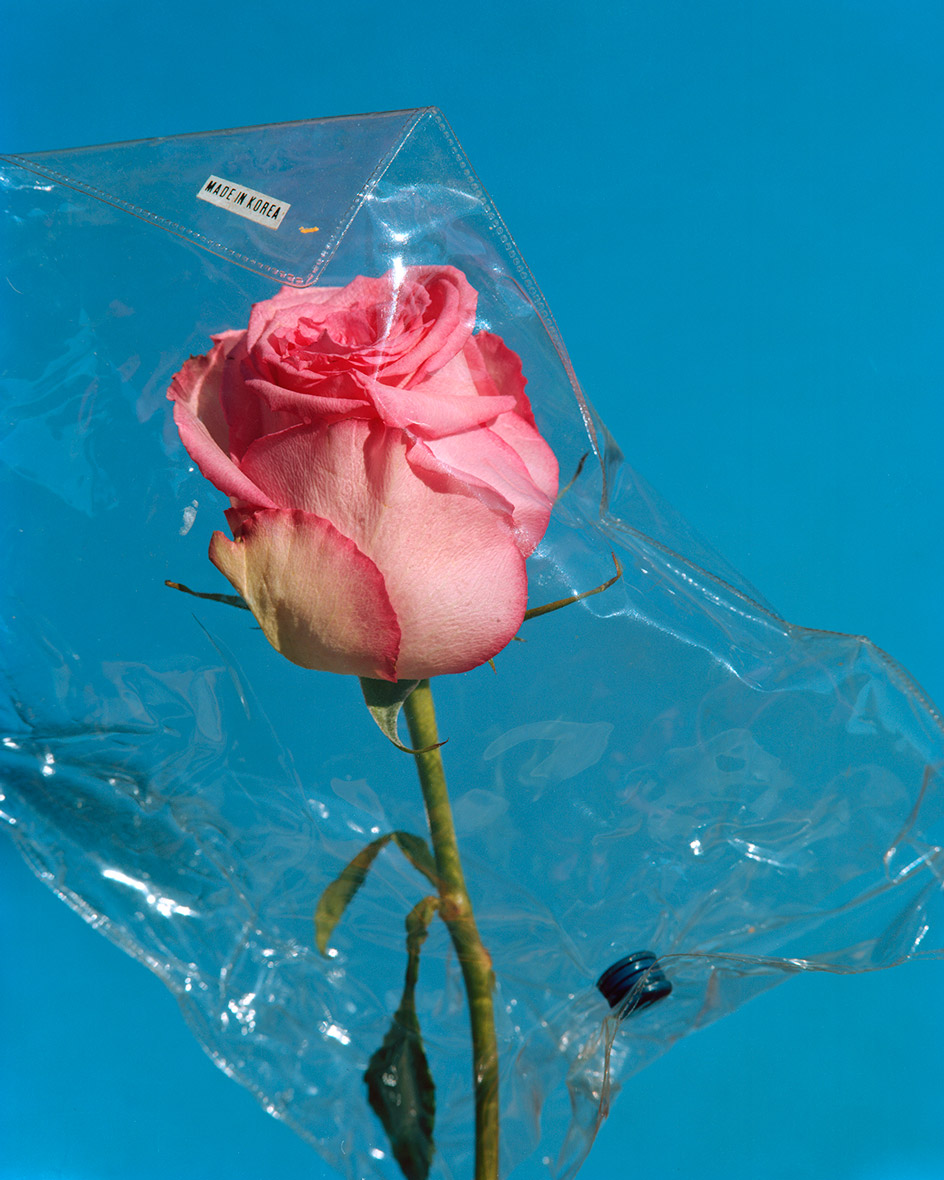
Crushed Rose I
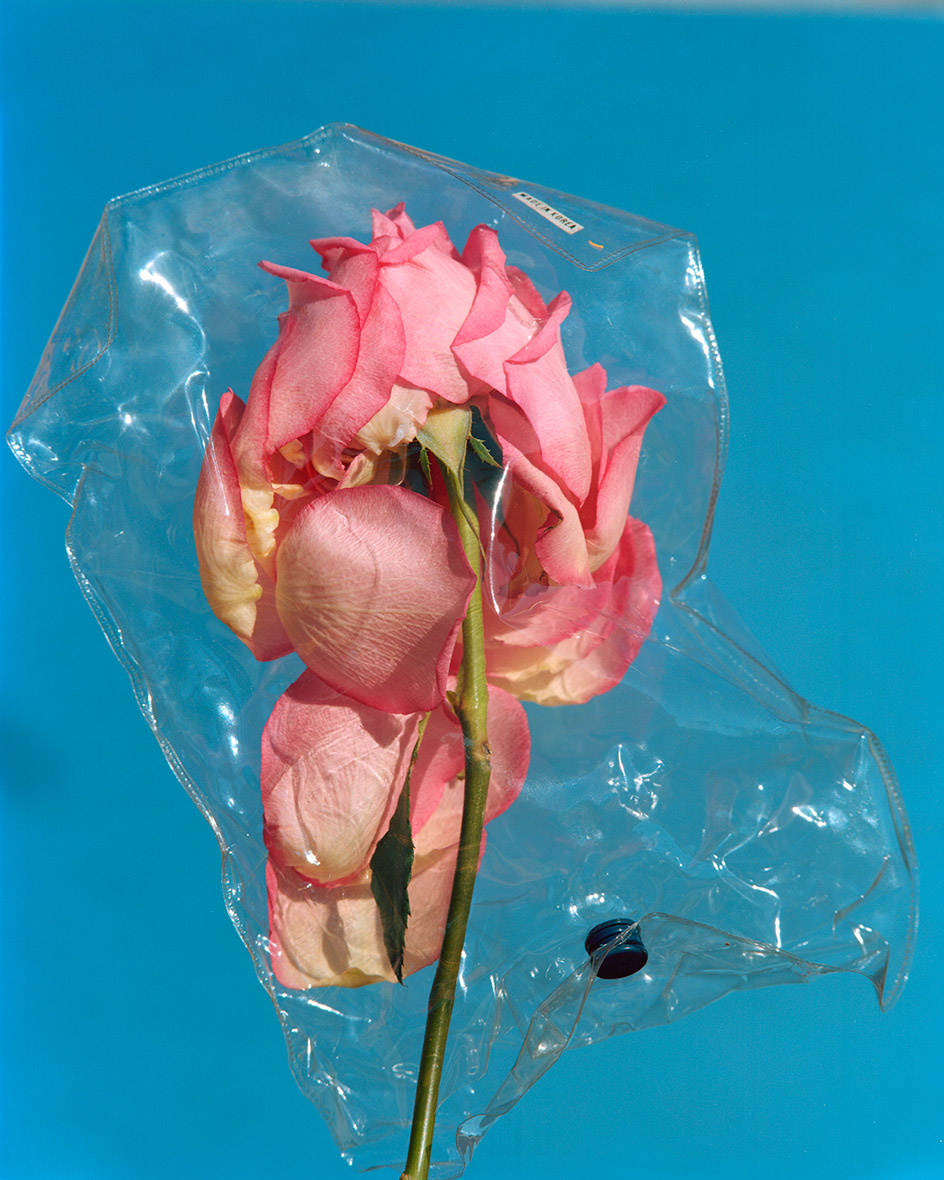
Crushed Rose III

Crushed Rose IV
INFORMATION
Receive our daily digest of inspiration, escapism and design stories from around the world direct to your inbox.
-
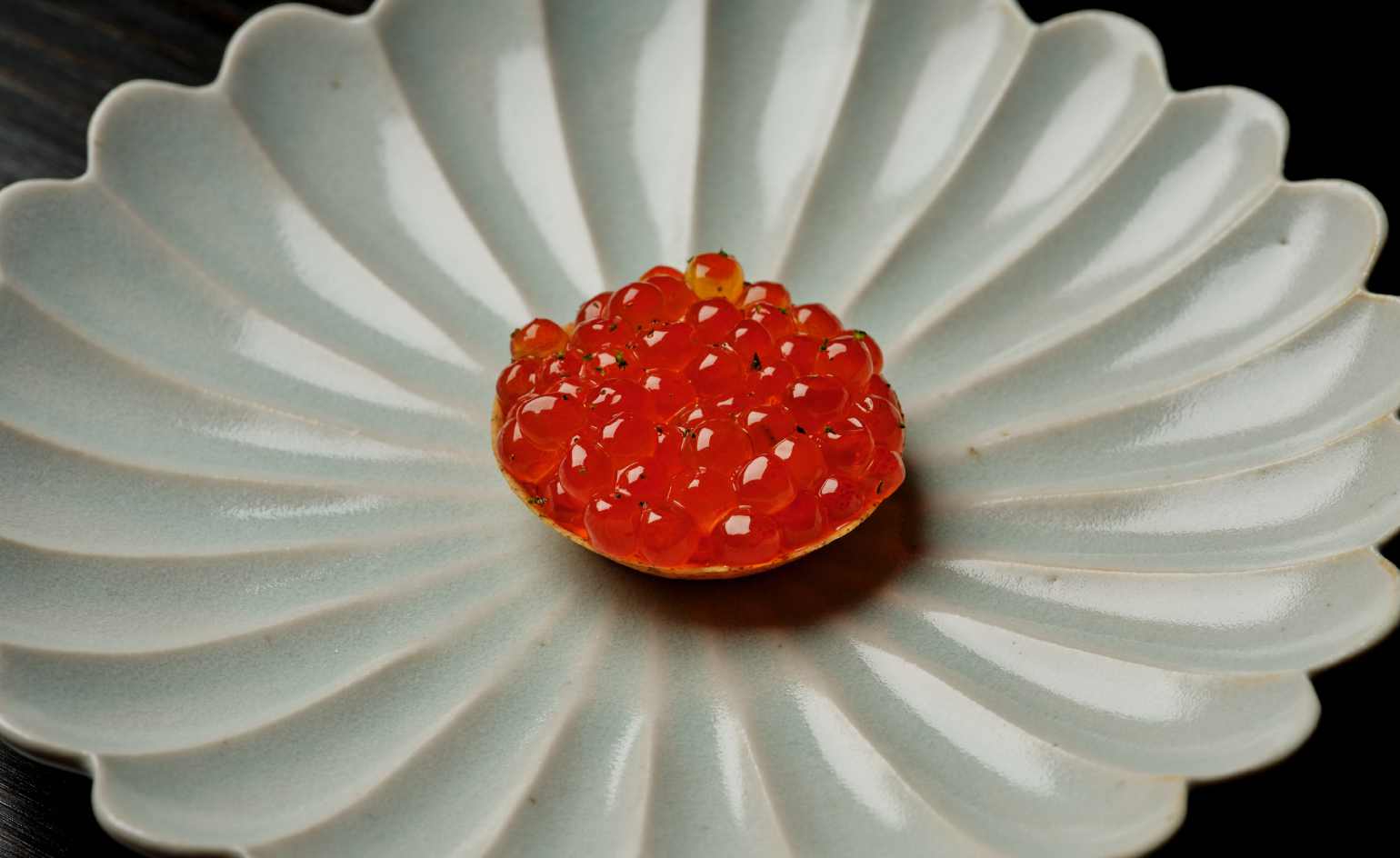 This cult Los Angeles pop-up restaurant now has a permanent address
This cult Los Angeles pop-up restaurant now has a permanent addressChef Brian Baik’s Corridor 109 makes its permanent debut in Melrose Hill. No surprise, it's now one of the hardest tables in town to book
-
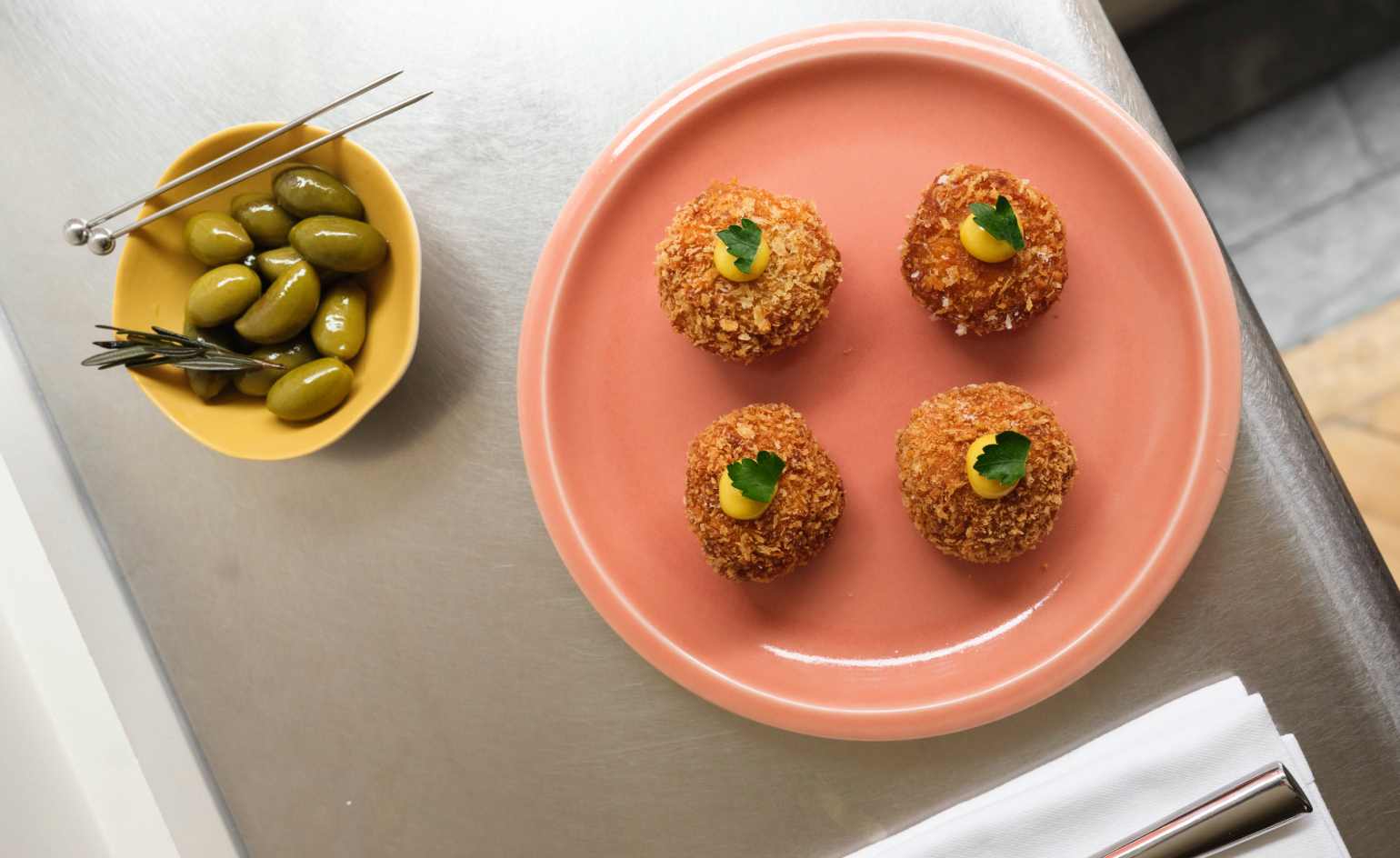 French bistro restaurant Maset channels the ease of the Mediterranean in London
French bistro restaurant Maset channels the ease of the Mediterranean in LondonThis Marylebone restaurant is shaped by the coastal flavours, materials and rhythms of southern France
-
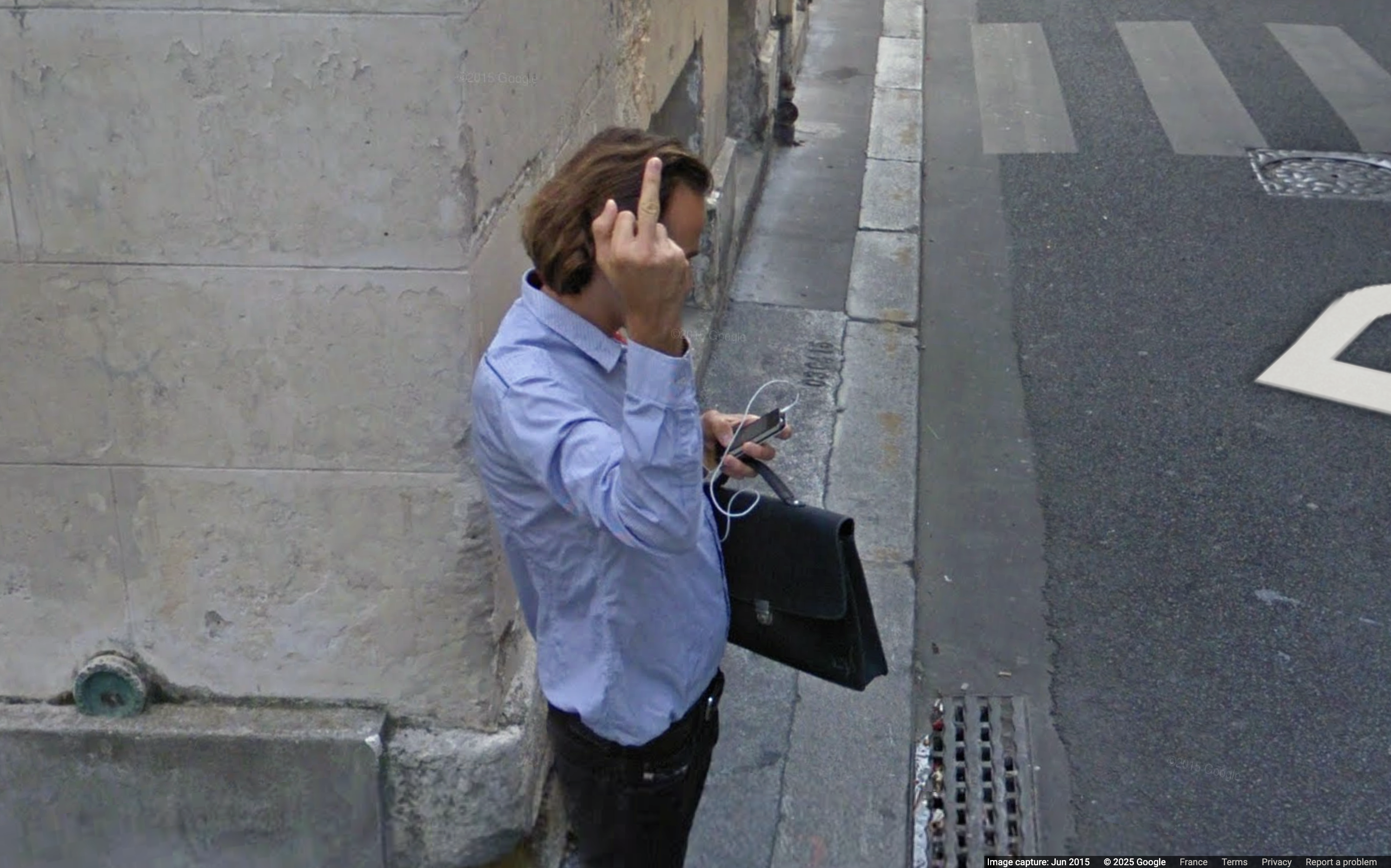 How ethical is Google Street View, asks Jon Rafman in Copenhagen
How ethical is Google Street View, asks Jon Rafman in CopenhagenIn 'Report a Concern - the Nine Eyes Archives' at Louisiana Museum of Art, Copenhagen, Jon Rafman considers technology's existential implications
-
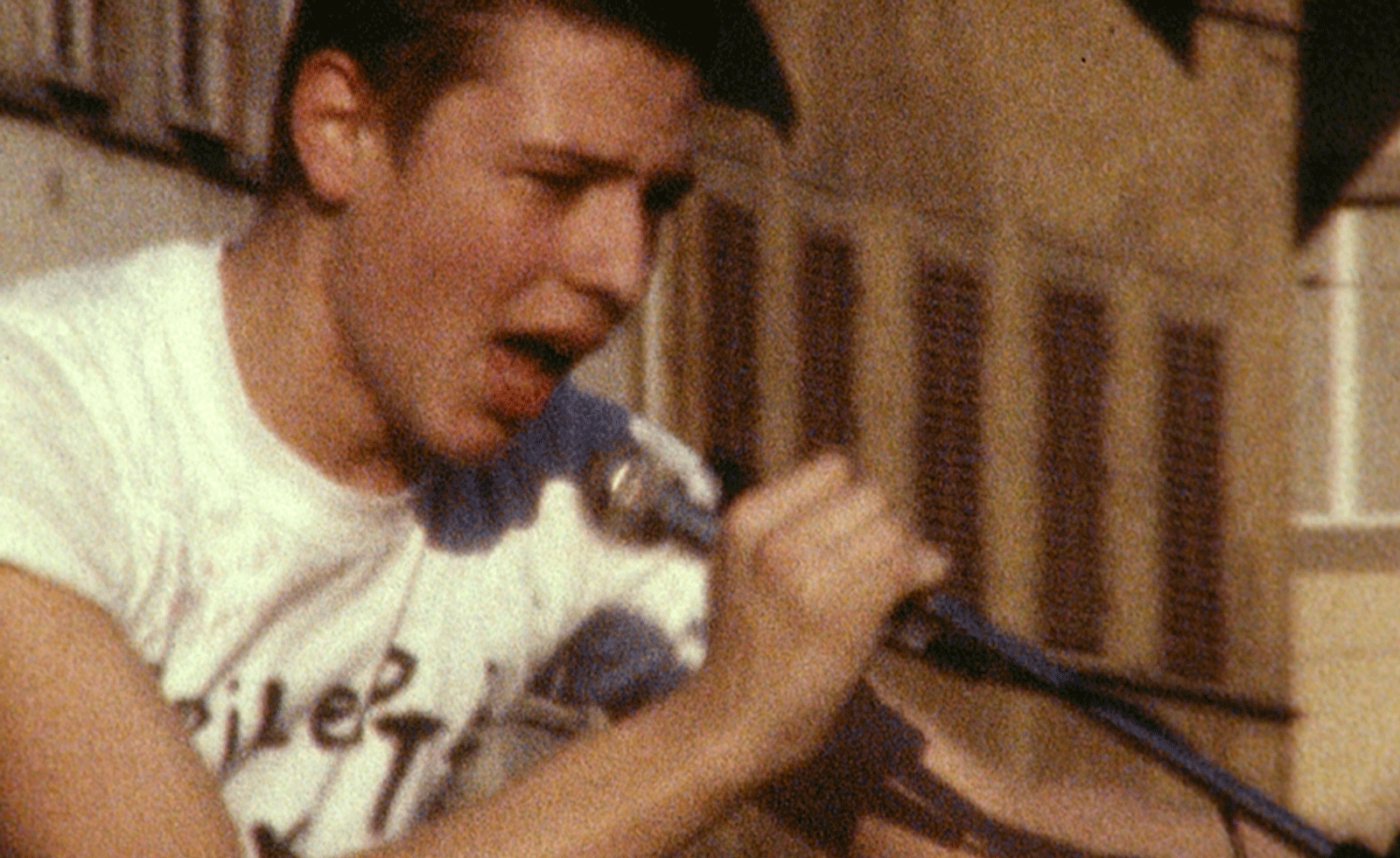 A forgotten history of Italian artists affected by the HIV-AIDS crisis goes on show in Tuscany
A forgotten history of Italian artists affected by the HIV-AIDS crisis goes on show in Tuscany‘Vivono: Art and Feelings, HIV-AIDS in Italy. 1982-1996’, at Centro per l'Arte Contemporanea Luigi Pecci in Prato delves into the conversation around the crisis
-
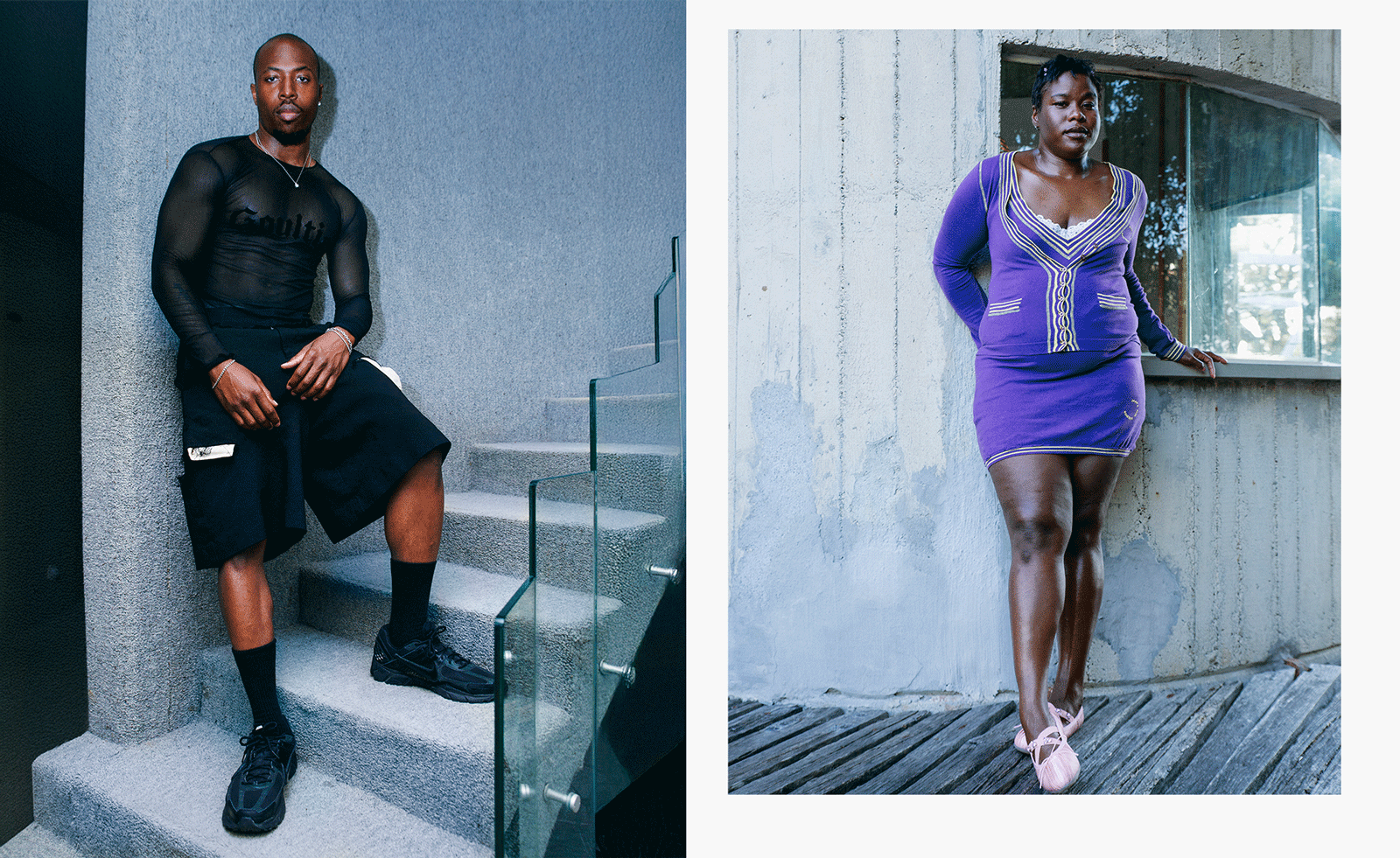 Creativity and rest reign at this Tuscan residence for Black queer artists
Creativity and rest reign at this Tuscan residence for Black queer artistsMQBMBQ residency founder Jordan Anderson sparks creativity at his annual Tuscan artist residency. Wallpaper* meets him to hear about this year's focus.
-
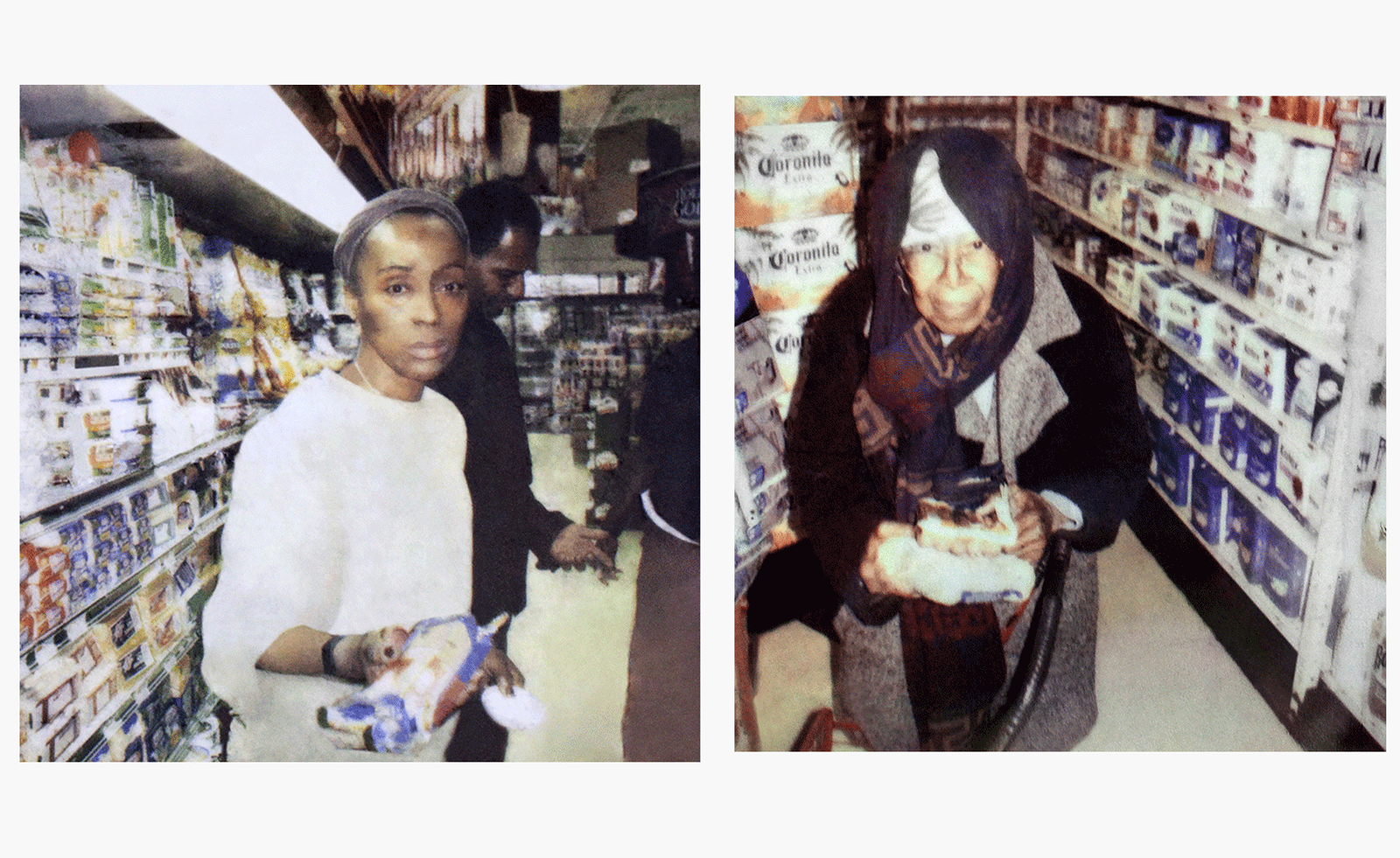 Photographer Mohamed Bourouissa reflects on society, community and the marginalised at MAST
Photographer Mohamed Bourouissa reflects on society, community and the marginalised at MASTMohamed Bourouissa unites his work from the last two decades at Bologna’s Fondazione MAST
-
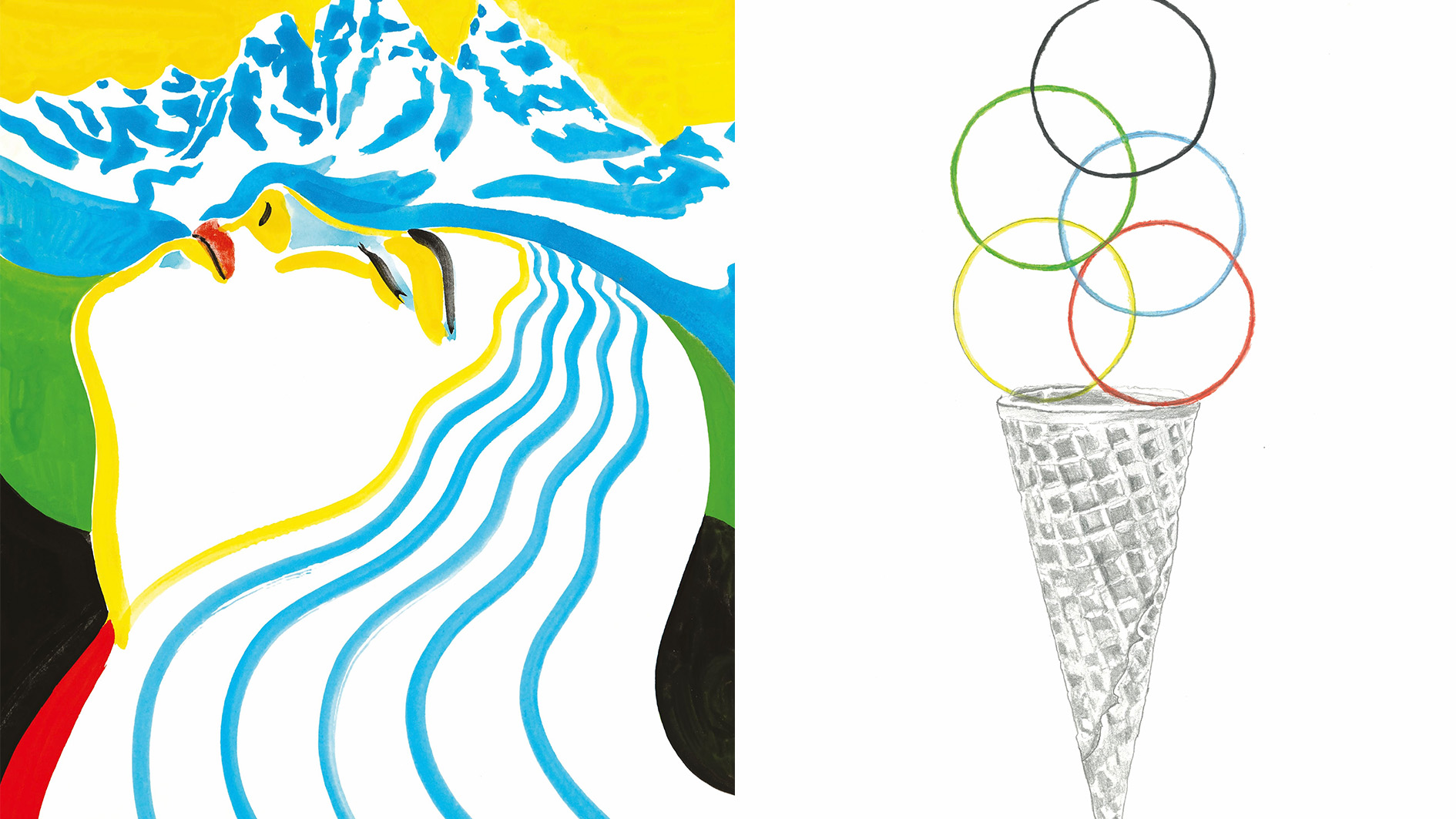 Ten super-cool posters for the Winter Olympics and Paralympics have just been unveiled
Ten super-cool posters for the Winter Olympics and Paralympics have just been unveiledThe Olympic committees asked ten young artists for their creative take on the 2026 Milano Cortina Games
-
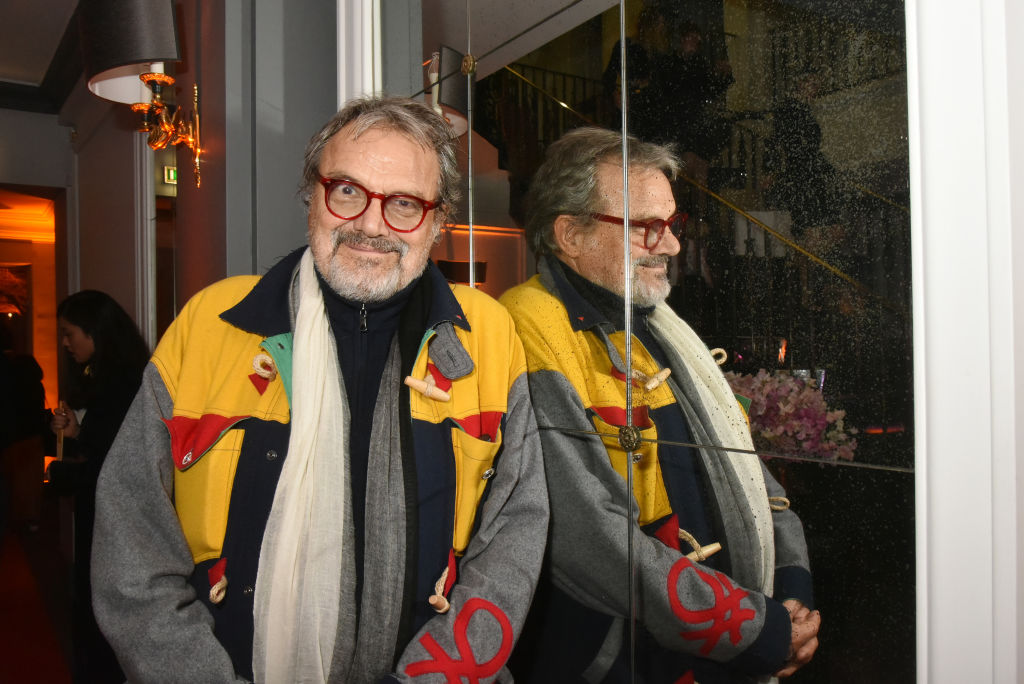 Remembering Oliviero Toscani, fashion photographer and author of provocative Benetton campaigns
Remembering Oliviero Toscani, fashion photographer and author of provocative Benetton campaignsBest known for the controversial adverts he shot for the Italian fashion brand, former art director Oliviero Toscani has died, aged 82
-
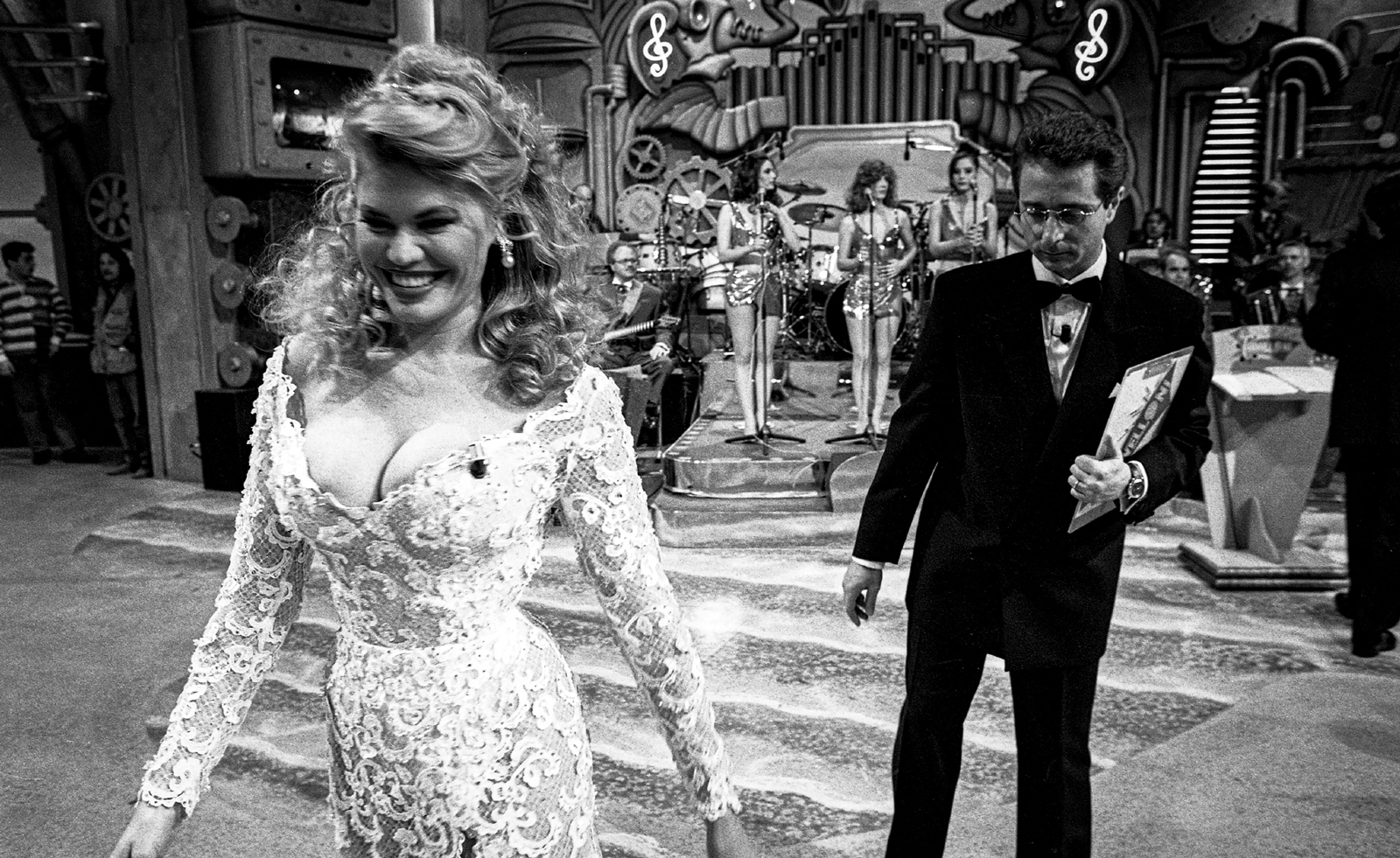 Distracting decadence: how Silvio Berlusconi’s legacy shaped Italian TV
Distracting decadence: how Silvio Berlusconi’s legacy shaped Italian TVStefano De Luigi's monograph Televisiva examines how Berlusconi’s empire reshaped Italian TV, and subsequently infiltrated the premiership
-
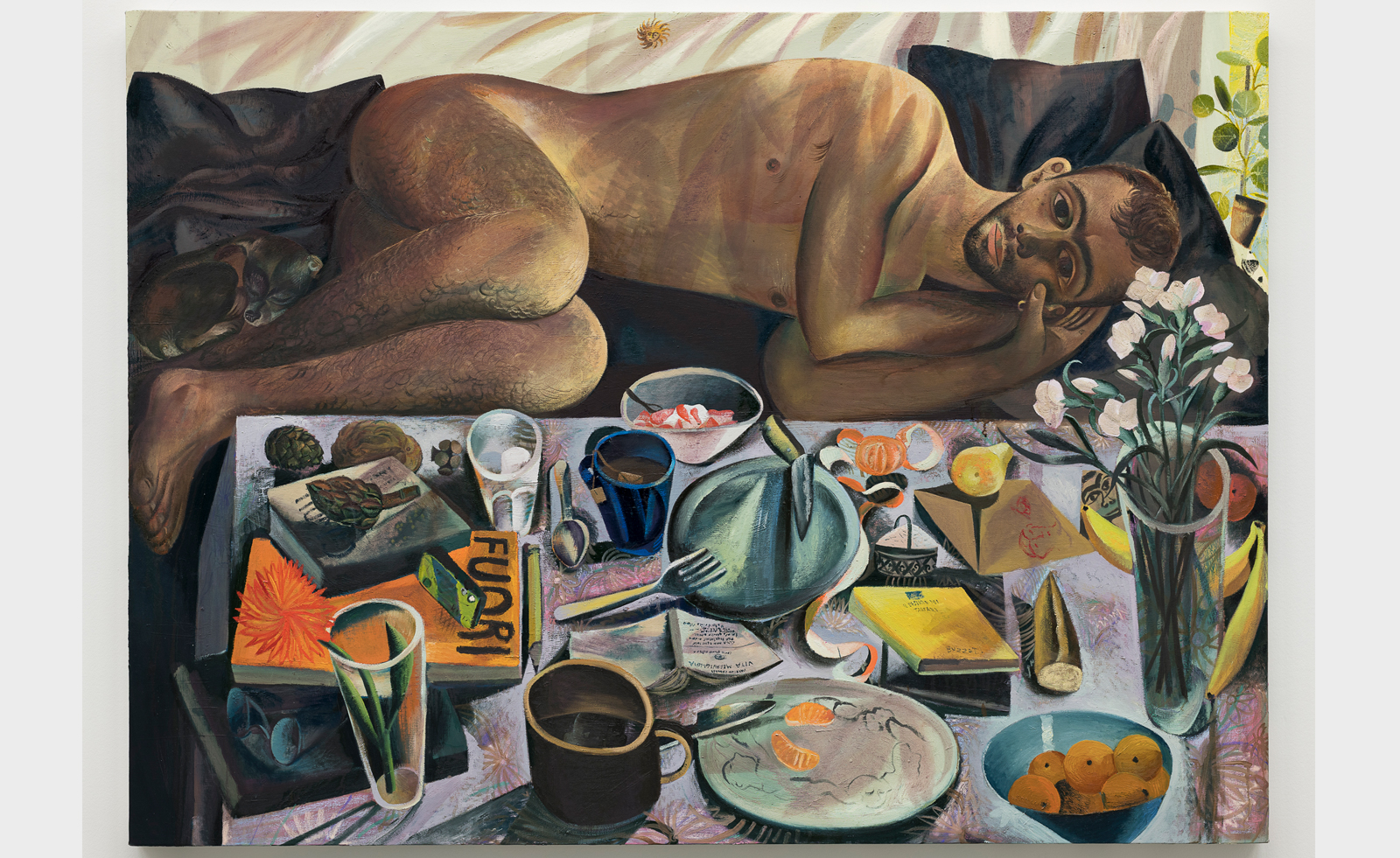 Louis Fratino leans into queer cultural history in Italy
Louis Fratino leans into queer cultural history in ItalyLouis Fratino’s 'Satura', on view at the Centro Pecci in Italy, engages with queer history, Italian landscapes and the body itself
-
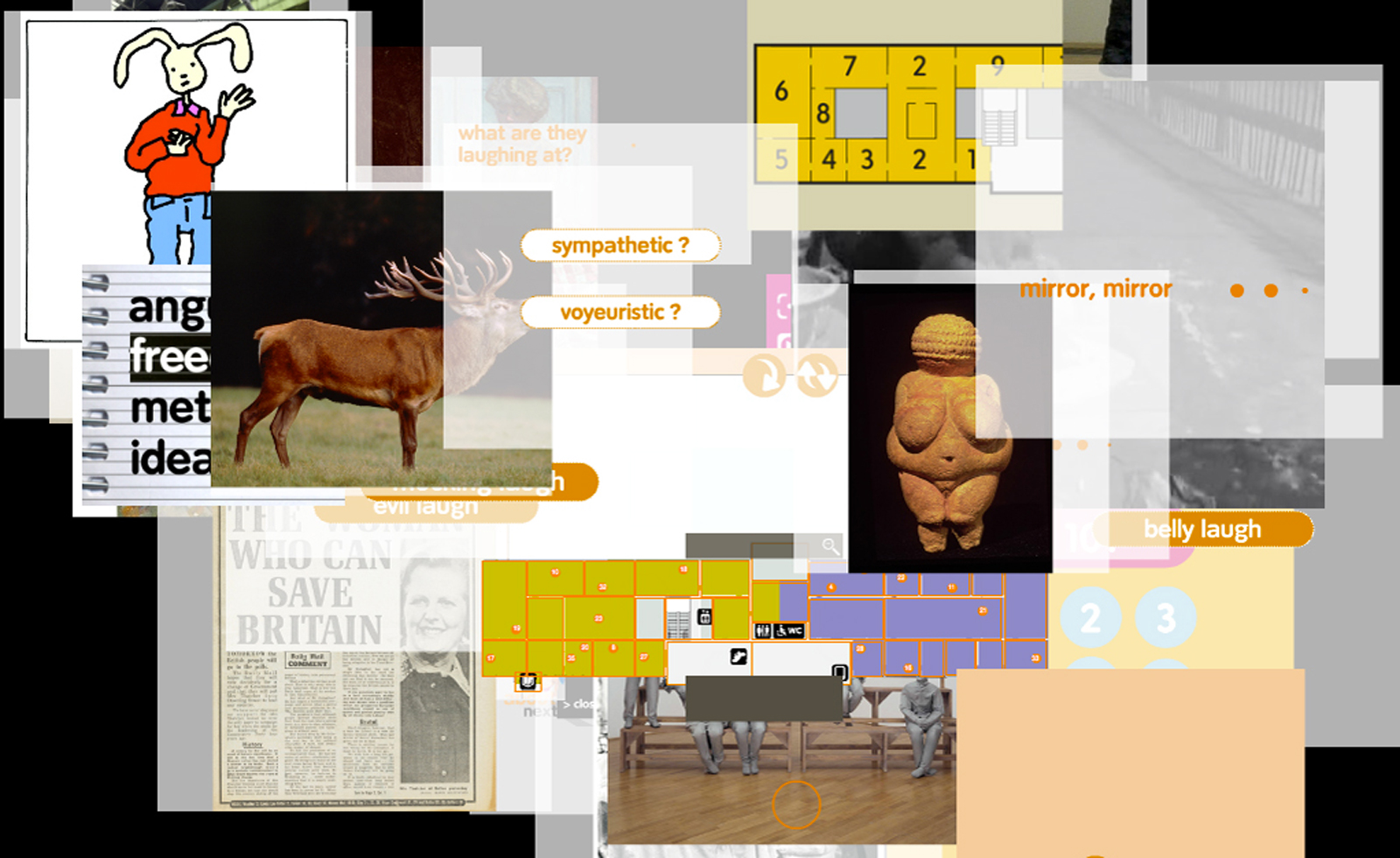 ‘I just don't like eggs!’: Andrea Fraser unpacks the art market
‘I just don't like eggs!’: Andrea Fraser unpacks the art marketArtist Andrea Fraser’s retrospective ‘I just don't like eggs!’ at Fondazione Antonio dalle Nogare, Italy, explores what really makes the art market tick